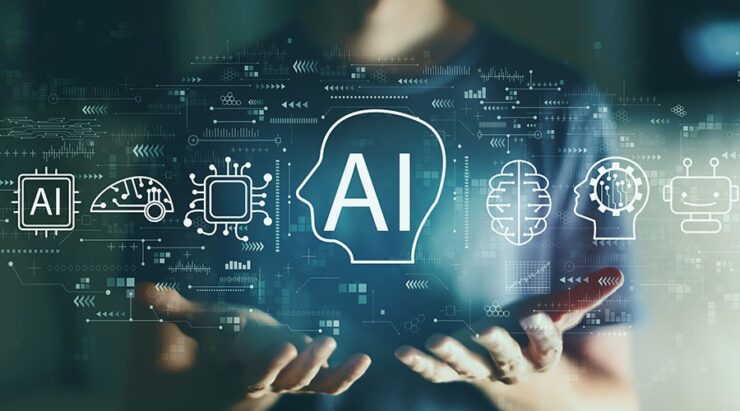Table of Contents
Artificial intelligence does not fail because of poor algorithms as often as it fails because of poor data movement. The biggest limitation in AI reliability today is not the lack of models but the lack of a stable, high-quality data transfer infrastructure that ensures accuracy, timeliness, and integrity of information between systems.
Reliable data flow defines how well an AI can learn, reason, and respond in real-world environments. In other words, improving the infrastructure behind data transfer directly improves AI reliability.
Why AI Reliability Depends on Data Movement

AI systems learn and operate based on massive datasets that move constantly, between edge devices, servers, clouds, and hybrid systems. Each step in that process introduces risks: delays, losses, duplications, or corruptions of data packets.
Even a small error can ripple through a training cycle, creating biases or false outputs that compromise trust in the model.
For example, consider an autonomous vehicle network. The AI depends on data from sensors, GPS, and communication modules that must synchronize in real time.
If the data transfer infrastructure drops even a fraction of that information due to latency or bandwidth bottlenecks, the system can misinterpret road conditions or vehicle proximity.
In finance, delays in transferring market data can cause predictive models to make decisions based on outdated information.
These problems reveal a simple truth: data transfer defines reliability. When data moves seamlessly, models perform as expected. When transfer lags, the system collapses under its own uncertainty.
The Role of Scalable Infrastructure
Scalable infrastructure is the backbone of reliable AI deployment. Most AI applications today rely on distributed environments where training and inference occur across multiple nodes.
The challenge is keeping all those nodes synchronized. Scalability in this context means more than adding servers; it means ensuring bandwidth allocation, latency reduction, and fail-safe transfer protocols that keep data consistent at all times.
Data pipelines must also handle the “velocity” aspect of AI workloads, the constant inflow and outflow of data during training and operational cycles.
Technologies like edge caching, data compression, and parallelized transfer channels allow this flow to remain efficient even as workloads scale. Without them, scaling an AI system only magnifies the reliability problem.
Data Transfer Bottlenecks That Reduce Reliability
- Latency and Jitter: Real-time AI models, such as those used in autonomous control or security monitoring, require millisecond precision. Any network delay introduces uncertainty that accumulates in model predictions.
- Packet Loss: Missing or corrupted packets in transfer cause incomplete datasets, forcing models to interpolate or guess missing information. Over time, this erodes model accuracy.
- Bandwidth Limitations: Training AI on high-resolution video, medical imaging, or large language datasets demands bandwidth that many systems cannot sustain. Throttled bandwidth forces trade-offs in fidelity.
- Inconsistent Protocols: When AI pipelines connect across multiple systems using different standards or security protocols, data integrity can break down.
These limitations explain why modern AI reliability depends not only on clever modeling but also on network engineering, distributed file systems, and structured data orchestration.
Building Reliability From the Ground Up

Improving AI reliability starts with rethinking how data moves. It requires an architecture that treats data transfer as part of the intelligence process rather than a background function. That means combining network design, redundancy, and compression techniques to guarantee consistency even under load.
- Adopting Unified Data Transfer Frameworks: A consistent protocol across systems ensures that every node reads and writes data in the same format, reducing translation errors.
- Integrating Redundancy Layers: Multiple parallel data paths help avoid single points of failure. When one route fails, another continues to supply data seamlessly.
- Optimizing Data Storage Proximity: Using edge computing nodes close to data sources minimizes transfer distance and latency, improving real-time accuracy.
- Prioritizing Data Integrity Verification: Continuous checksums and validation scripts confirm that what arrives is identical to what was sent, preventing subtle corruption.
How Smarter Data Transfer Restores Reliability
At the core of every reliable AI operation lies the principle of synchronization, ensuring all components share the same updated truth. When synchronization falters, reliability fails. The solution is not just faster internet but a smarter, more efficient way to manage AI data transfer that aligns with how models evolve and operate.
Modern systems now integrate transfer orchestration tools capable of detecting bottlenecks, rerouting packets dynamically, and optimizing path selection.
These mechanisms eliminate downtime and ensure that models receive continuous, clean, and complete data.
The improvement is tangible: fewer retraining cycles, more stable predictions, and reduced drift in live deployments.
In healthcare, for instance, diagnostic models trained across hospital networks can maintain uniform accuracy when their imaging data flows seamlessly between local storage systems and cloud AI cores.
In logistics, supply chain AI becomes more reliable when real-time data from vehicles, sensors, and weather systems is transferred without interruption. Across all use cases, smarter transfer equals stronger reliability.
The Shift Toward Edge-Aware and Hybrid AI Systems
As industries move toward hybrid and edge-based AI, data transfer reliability becomes even more complex and more crucial. Edge AI requires moving smaller data segments more frequently between devices and centralized systems.
The challenge is ensuring that edge models stay consistent with global updates while operating with limited connectivity.
To handle this, engineers now combine adaptive compression algorithms with asynchronous synchronization methods.
These techniques allow AI nodes to operate autonomously when offline, then reconcile their datasets once reconnected.
Hybrid frameworks reduce the dependency on constant connectivity, boosting both resilience and reliability.
A real-world example comes from industrial automation. Sensors in factories generate terabytes of data daily.
Instead of sending all that raw information to the cloud, edge systems preprocess it locally, transferring only essential features for further training.
This selective data transfer saves bandwidth while maintaining model precision.
Balancing Speed, Security, and Accuracy

Reliable AI must also remain secure. Every transfer path introduces potential vulnerabilities, and data tampering can destroy a model’s credibility faster than any computational error.
Therefore, building a trustworthy AI system means balancing three key dimensions:
| Factor | Objective | Impact on Reliability |
| Speed | Reduce latency and maintain real-time responsiveness | Ensures timely data for dynamic models |
| Security | Protect against interception, manipulation, or unauthorized access | Prevents compromised inputs that distort results |
| Accuracy | Preserve data fidelity through checksums and validation | Guarantees consistent training and inference quality |
When these three align, the model’s predictions stabilize. A fast but insecure transfer leads to tampering. A secure but slow network creates lag. Only an infrastructure that harmonizes all three maintains reliability at scale.
Measuring and Maintaining Reliability
AI reliability is not static; it requires ongoing measurement. Systems must continuously audit transfer performance metrics such as throughput, packet loss, and synchronization delay. These measurements help predict when infrastructure upgrades are needed before failures occur.
Many organizations now integrate monitoring dashboards that correlate data transfer performance with model accuracy. When dips in transfer quality correlate with spikes in error rates, the cause becomes clear and fixable. This continuous observation forms a feedback loop where infrastructure and AI reinforce one another.
The Future of Reliable AI

In the coming years, as models grow larger and more distributed, reliability will depend on how seamlessly data can move across continents and clouds. Standardized frameworks, automated transfer orchestration, and quantum-secured channels will define the next generation of AI reliability.
The shift is already visible in industries that depend on split-second accuracy, aviation control, medical robotics, and autonomous fleets. These sectors are investing not just in better models, but in the invisible architecture that keeps those models supplied with flawless data streams.
The AI of the future will not be measured by its parameters alone but by the resilience of the networks that feed it.
Conclusion
Improving AI reliability is not about rewriting algorithms; it is about strengthening the unseen highways that connect data sources, storage layers, and inference engines.
Reliable AI depends on an efficient, fault-tolerant data transfer infrastructure that guarantees integrity, timeliness, and security.
When organizations treat data movement as a core engineering priority rather than an afterthought, AI stops failing silently. It becomes stable, explainable, and worthy of trust.
The smarter and faster the data transfer layer, the more reliable the intelligence built upon it.

